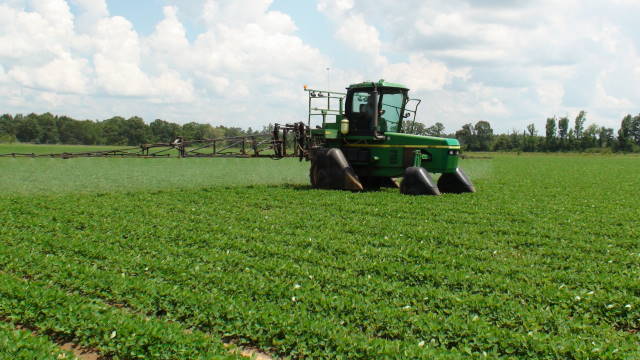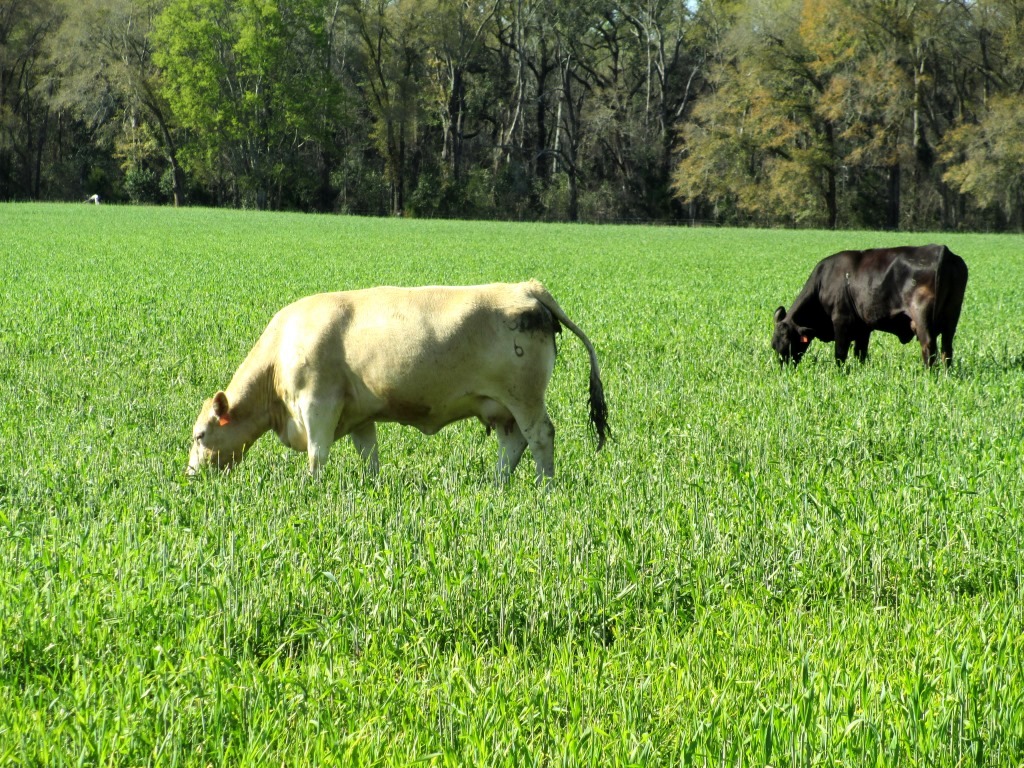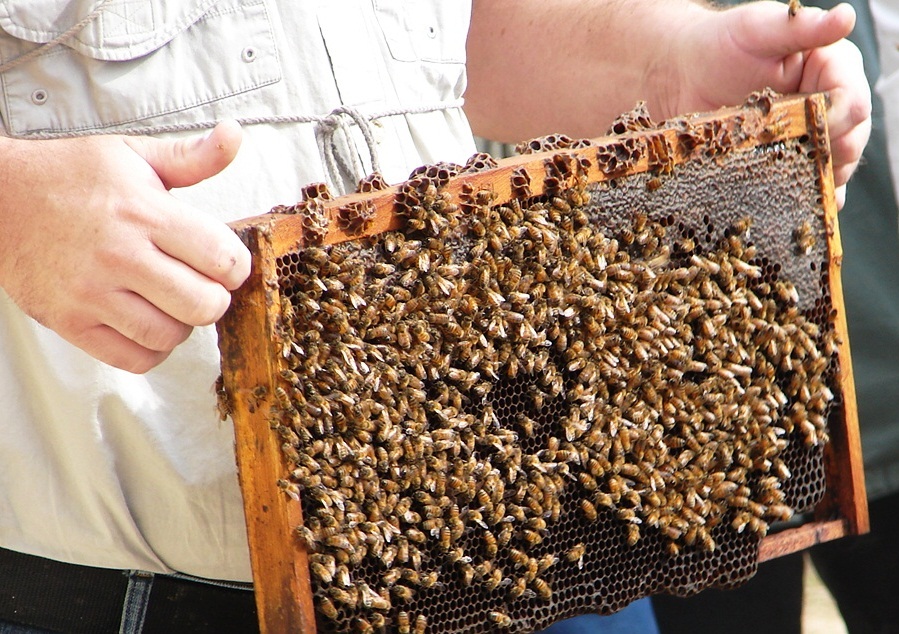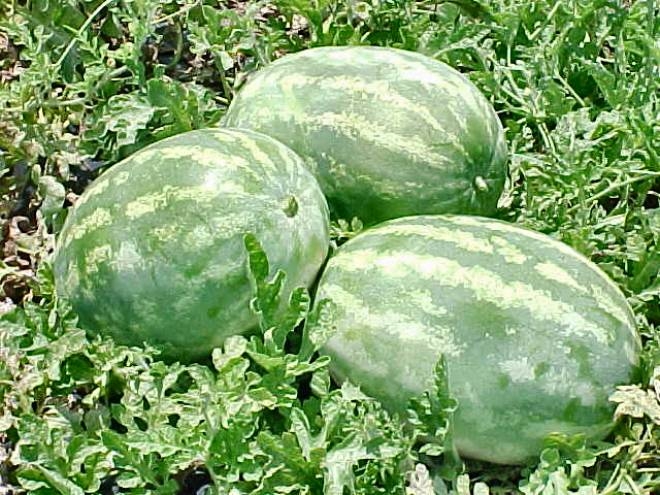 The University of Florida IFAS Extension offers a database of fact sheets available for free download on the Internet called EDIS (Electronic Data Information Source) that has many publications of interest to farmers and ranchers in Northwest Florida. Each fact sheet has a PDF or printer friendly link in the top left corner. The following are just a few of the new fact sheets that were recently added to the collection pertaining to commercial agriculture production. http://edis.ifas.ufl.edu
The University of Florida IFAS Extension offers a database of fact sheets available for free download on the Internet called EDIS (Electronic Data Information Source) that has many publications of interest to farmers and ranchers in Northwest Florida. Each fact sheet has a PDF or printer friendly link in the top left corner. The following are just a few of the new fact sheets that were recently added to the collection pertaining to commercial agriculture production. http://edis.ifas.ufl.edu
 Row Crops
Row Crops
Carinata Production in Florida
Brassica carinata is a promising oilseed crop with great potential for profitable cultivation in Florida. Its high oil content and favorable fatty acid profile make it suitable for the biofuel industry, especially as a biojet fuel. The UF/IFAS North Florida Research and Education Center (NFREC) in Quincy, Florida, has been working to identify advanced carinata genotypes that are high yielding (seed and oil), disease resistant, early maturing, and adapted to Florida. The work at NFREC is being done in conjunction with Agrisoma Biosciences Inc., a crop company that has the world’s largest collection of carinata germplasm. This 6-page fact sheet’s “Agronomic Management” section provides recommendations resulting from NFREC’s research. was written by C. M. Bliss, R. Seepaul, D. L. Wright, J. J. Marois, R. Leon, N. Dufault, S. George, and S. M. Olson, and published by the UF Department of Agronomy, December 2014.
http://edis.ifas.ufl.edu/ag389
Genetically Modified Food
A food is considered genetically modified when its genetic makeup is altered in some way as a result of the use of recombinant DNA biotechnological procedures. These changes result in the expression of attributes not found in the original. Examples include delayed-ripening tomatoes and pest-resistant or herbicide-tolerant crops. Genetic modification can be used to improve crop yields, reduce insecticide use, or increase the nutritional value of foods. This 5-page fact sheet answers questions consumers might have about genetically modified food. Written by Keith R. Schneider, Renée Goodrich Schneider, and Susanna Richardson, and published by the UF Department of Food Science and Human Nutrition, November 2014.
http://edis.ifas.ufl.edu/fs084
 Livestock
Livestock
How Do I Legally Sell Meat from My Own Livestock and Poultry in Florida?
There is much interest in locally produced foods, but the federal, state, and local regulations can be confusing. This 5-page fact sheet is a “one-stop-shop” for Florida residents who want to sell meat from their own livestock and poultry. Written by Chad Carr, Jason Scheffler, Larry Eubanks, Ron Webb, Lee Cornman, Scotland Talley, and Steve Stiegler, and published by the UF Department of Animal Sciences, December 2014.
http://edis.ifas.ufl.edu/an316
Cull Cow Beef Quality Issues series
Cull cattle are those that are sold from a herd for lack of performance, lack of resources, or genetic improvement The non-fed beef cattle market (cattle that are not managed through traditional feedlot finishing systems) is comprised primarily of cull cows and bulls. To address liability and food safety concerns, this series of articles discusses some quality defects identified in the non-fed beef market, how to prevent them, and how to address them when they appear in cattle. http://edis.ifas.ufl.edu/topic_series_cull_cow_beef_quality_issues
Selective Antibiotic Treatment for Dairy Cow Mastitis
Mastitis is the most common disease in dairy cattle and is estimated to cost dairy farmers $179 a case. When farmers detect clinical mastitis, they usually take immediate action with antibiotics; but many cases either do not need antimicrobial treatment, resolve without treatment, or are not effectively treated by the antimicrobial used. A selective treatment approach can be more effective. This two-step strategy involves first identifying the pathogen, then deciding on a treatment — this would decrease the use of antimicrobials as well as treatment-associated costs for the farmer. This 5-page fact sheet was written by Kathryn Merriman, Fiona Maunsell, Corwin Nelson, and Albert De Vries, and published by the UF Department of Animal Sciences, December 2014. (Photo: University of Minnesota Laboratory for Udder Health, 2004)
http://edis.ifas.ufl.edu/an306
Understanding Pregnancy Diagnosis in Beef Cattle
Because 55 to 70 percent of the input costs associated with a beef cattle operation are related to nutrition, culling open (non-pregnant) cows after the breeding season can save as much as $200 per head that can be diverted to the purchase or development of replacement females, sire selection, increased nutritional management, and other management-related costs. Pregnancy diagnosis can be performed simply during vaccination or at the time of weaning. There are three practical methods: rectal palpation, transrectal ultrasonography, or blood test. This 5-page fact sheet was written by G. Cliff Lamb, Darren D. Henry, Vitor R. G. Mercadante, and Doug E. Mayo, and published by the UF Department of Animal Sciences, November 2014.
http://edis.ifas.ufl.edu/an314
Potential Bull Buyers Perceive Increased Value to their Operations When Purchasing Bulls from the Florida Bull Test
Since its beginning in 2000, the Florida Bull Test has been under constant evolution to achieve its goal of helping producers select high-quality sires, thereby improving production and profitability of beef cattle producers in Florida and the Southeast United States. A survey of potential buyers before the 2014 sale succeeded in identifying which characteristics of bulls are most important to buyers purchasing bulls: purchasing bulls from the Florida Bull Test increases the value of calves sired by improving performance, genetics, and feed efficiency of their herds. This 3-page fact sheet was written by Vitor R. G. Mercadante, Darren D. Henry, Francine M. Ciriaco, Paula M. Mercadante, Tessa Schulmeister, Nicolas DiLorenzo, and G. Cliff Lamb, and published by the UF Department of Animal Sciences, November 2014.
http://edis.ifas.ufl.edu/an313
Saddle and Tack Care in Hot and Humid Environments
The South’s climate is appealing for equestrian activities. While riders enjoy the weather, it creates some challenges in caring for saddles and other tack. When the weather becomes hot and the humidity climbs and the rains are frequent, a tack room can become a breeding ground for mold and mildew. There are several things a rider can do, however, to lower the incidence of mildew on saddles and tack. This 3-page fact sheet was written by Joel McQuagge, Todd Thrift, and Ed Johnson, and published by the UF Department of Animal Sciences, November 2014.
http://edis.ifas.ufl.edu/an303
 Beekeeping
Beekeeping
Best Management Practices for Siting Honey Bee Colonies: Good Neighbor Guidelines
Keeping honey bees requires responsible management so that the bees do not become a nuisance. Additionally, the presence of Africanized honey bees in Florida places more pressure on beekeepers to maintain their colonies properly. This 3-page fact sheet is a reference for honey bee management in Florida, with emphasis on siting apiaries in sensitive locations, in order to promote harmonious cooperation between beekeepers, neighbors, and landowners. Written by Jamie Ellis, Jerry Hayes, and published by the UF Department of Entomology and Nematology, November 2014. (Photo by Thien Gretchen (CC BY-NC-ND 2.0), via Flickr)
http://edis.ifas.ufl.edu/aa137
Frequently Asked Questions about the Africanized Honey Bee in Florida
The African honey bee, Apis mellifera scutellata, was introduced into South America from the central and southern part of Africa in 1957. Since its introduction into South America, the African bee has migrated into the southwestern United States and Florida. Apis mellifera scutellata is the African bee subspecies referred to in this 3-page fact sheet, which answers commonly asked questions about these bees and their behavior. Written by M. K. O’Malley, J. D. Ellis and A. S. Neal, and published by the UF Department of Entomology and Nematology, November 2014.
http://edis.ifas.ufl.edu/in738
Tropilaelaps mite Tropilaelaps spp. Delfinado & Baker (Arachnida: Mesostigmata: Laelapidae)
Honey bees throughout the world are exposed to numerous pests, parasites, and pathogens. One such parasite is Tropilaelaps spp. Delfinado & Baker, an ectoparasitic mite that feeds on the hemolymph of developing honey bees. Four species of Tropilaelaps have been identified and characterized. This 4-page fact sheet was written by Ashley N. Mortensen, Sarah Burleson, Gunasegaran Chelliah, Ken Johnson, Daniel R. Schmehl, and Jamie D. Ellis, and published by the UF Department of Entomology and Nematology, October 2014.
http://edis.ifas.ufl.edu/in1061
 Horticulture
Horticulture
Postemergent Herbicides for Use In Ornamentals
Postemergent herbicides are applied directly to weeds. This 5-page fact sheet is largely comprised of two tables: Table one lists postemergent herbicides that can be safely used over the top of some ornamentals when used according to label directions; table 2 lists postemergent herbicides that are registered for use around ornamental plants when applied as a directed spray. Written by Jeffrey G. Norcini and Chris Marble, and published by the UF Department of Environmental Horticulture, November 2014. (UF/IFAS photo: Thomas Wright)
http://edis.ifas.ufl.edu/wg059
Techniques for Melon Grafting
Grafting as a cultural practice for controlling soilborne diseases and improving abiotic stress tolerance has been widely used in vegetable production in many areas of Asia and Europe. Interest in vegetable grafting has been growing in the United States in recent years, as well. Cost, along with the desire to customize scion cultivars and the need to produce organic transplants, has led many small and organic growers to choose to graft plants by themselves. To help growers who are interested in grafting melon plants achieve a high graft survival rate, this 5-page fact sheet introduces commonly used grafting techniques and their application in specific circumstances. Written by Wenjing Guan and Xin Zhao, and published by the UF Department of Horticultural Sciences, December 2014.
http://edis.ifas.ufl.edu/hs1257
Facts about Farm to School
Farm to school is a nationwide program that improves the supply of fresh, local produce to schools by building relationships between local farmers and schools. Over the past 20 years, school districts in all 50 states have joined the F2S program and are purchasing items from local farmers. Recent requirements for more fruit and vegetables in the National School Lunch Programs have made the F2S program more popular than ever. The University of Florida is committed to the Farm to School program and is working closely with the Florida Department of Agriculture and Consumer Services to connect farmers to schools. This 3-page fact sheet was written by Samantha Ward, Lauren Headrick, and Karla Shelnutt, and published by the UF Department of Family Youth and Community Sciences, December 2014.
http://edis.ifas.ufl.edu/fy1450
Estimating Willingness to Pay for New Mandarin Cultivars: A Revealed Preference Approach
California has overtaken Florida to become the major US domestic mandarin producer. Despite a shift in consumer preferences toward the ‘Clementine’ mandarin that is widely grown in California, this cultivar is not well adapted to the subtropical climate of Florida. But in 2009, the University of Florida introduced the ‘Sugar Belle’, a cross between the ‘Clementine’ mandarin and the ‘Minneola’ tangelo. Survey test results showed that subjects preferred this new cultivar in terms of overall flavor, sweetness, acidity, and juiciness. survey test results showed that the Florida ‘Sugar Belle’ was preferred over the California ‘Clementine’ mandarin and the Florida ‘Murcott’ mandarin (aka Honey mandarin) in terms of overall flavor, sweetness, acidity, and juiciness. To determine consumer willingness to pay for specific attributes, UF/IFAS economists combined sensory evaluation and experimental auctions in a unique way, by comparing two different types of ‘Sugar Belle’ (SB1 and SB2) with the main competing product to identify the most desirable characteristics and to determine the best marketing and pricing strategy. This 6-page fact sheet was written by Xiang Bi, Lisa House, Frederick Gmitter, and Zhifeng Gao, and published by the UF Department of Food and Resource Economics, September 2014.
http://edis.ifas.ufl.edu/fe955
Talking Local series
Extension agents can assist Florida farmers and ranchers in the labeling, sale, and promotion of locally-produced products. This six part series of 3- to 5-page fact sheets provides information about Florida consumers’ perceptions of local food to Extension faculty who are interested in local food programming or who work with local food clientele. Written by Joy N. Rumble and Caroline G. Roper, and published by the UF Department of Agricultural Education and Communication, September 2014.
http://edis.ifas.ufl.edu/topic_series_talking_local
In this series:
- Florida Consumer Definitions of Local Food
- Florida Consumers’ Local Food Purchasing Behaviors
- Florida Consumers’ Reasons for Purchasing Local Food
- Florida Consumers’ Food Buying Decisions when Given Local Food Information
- Florida Consumers’ Flexibility with the Term “Local”
- Florida Consumers’ Fresh from Florida Perceptions
Outbreaks of Foodborne Illness Associated with Melons
Despite the manner in which they are prepared, melons are commonly consumed raw without a processing step which would eliminate pathogenic bacteria. For those concerned about the safety of melons, including cantaloupe, honeydew, and watermelon, this 6-page fact sheet lists outbreaks associated with melons in the United States, Canada, and Europe, along with information about the location, pathogen, and incidence of illness. Written by Michelle D. Danyluk, Rachel McEgan, Ashley N. Turner, and Keith R. Schneider, and published by the UF Department of Food Science and Human Nutrition, November 2014.
http://edis.ifas.ufl.edu/fs258
